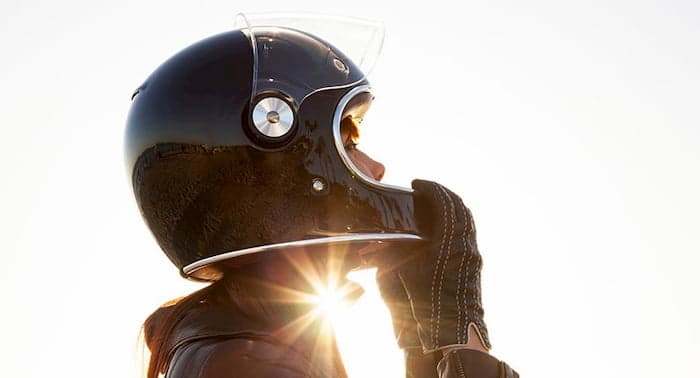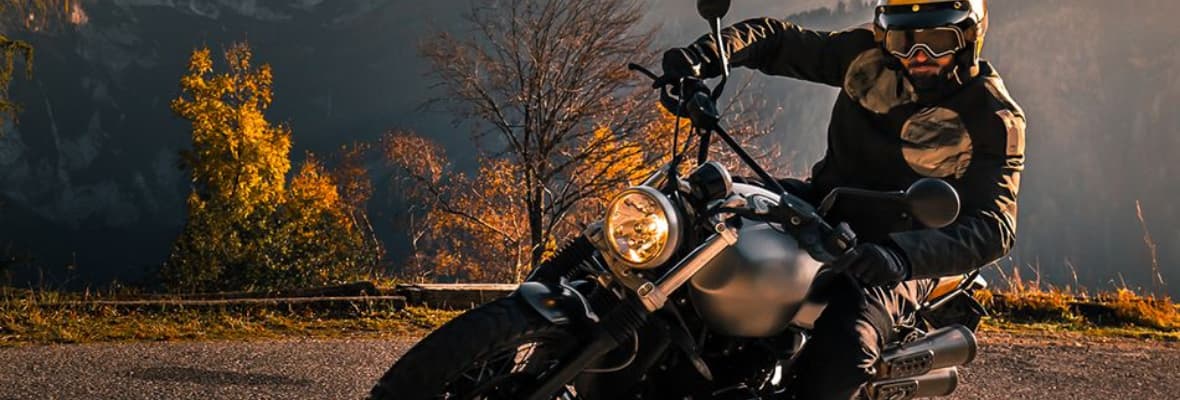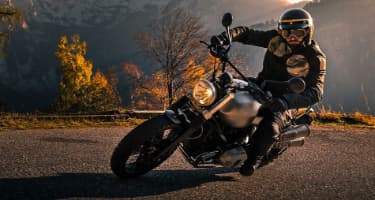Related articles
- buying-your-first-motorcycle-5-things-you-should-know
-
How to Get a Motorbike Licence in Australia
- How to Get a Motorbike Licence in NSW
- How to Get a Motorbike Licence in Victoria
- How to Get a Motorbike Licence in WA
- How to Get a Motorbike Licence in Tasmania
- How to Get a Motorbike Licence in the ACT
- How to Get a Motorbike Licence in SA
- How to Get a Motorbike Licence in NT
- How to Get a Motorbike Licence in Qld
- Motorcycle vs car: 8 reasons to ditch your car for a motorcycle
- 8 of the best motorcycle rides in Australia
- How to choose a motorcycle helmet that's right for you
- Pros and Cons of Different Types of Motorcycles
- The Cost of Owning a Motorcycle
- Mastering your motorcycle ergonomics
- The beginner’s guide to purchasing a motorcycle jacket
- How to prevent motorcycle theft
- Motorcycle lane filtering rules explained
- Motorcycle road positioning explained
- 6 Motorcycle maintenance tasks you can do yourself (inc. checklist)
- How to save on Motorcycle Insurance
- Motorcycle Sales Survey & Statistics 2022
- Do you need a licence for a scooter?
- Best Motorcycle Tours in the World
- Australian Motorcycle Owners Survey and Statistics 2025
- Buying Your First Motorcycle: A Beginner's Guide
Disclaimer: This information is general in nature only. While Budget Direct has endeavoured to ensure the information we’ve relied on is accurate and current, we do not guarantee it. Budget Direct accepts no liability for this information.
Riding a motorcycle is fun and rewarding but selecting the right motorcycle safety gear can often be difficult.
Whether you’re a first-time rider or you’ve been riding for years, your safety is the most important thing. That’s why buying the appropriate motorcycle safety gear is a decision that shouldn’t be made lightly.
We’ve compiled a guide of motorcycle safety gear, so you can feel safe and secure while riding your motorcycle.
#1: Helmet

In Australia, it’s illegal to ride a motorcycle without a helmet. And rightly so, they help prevent head injuries and death caused by accidents.
An effective motorcycle helmet should feature a firm, polystyrene foam inner lining that creates a barrier for impact. It should have high-quality straps that sit securely and comfortably around your face.
Motorcycle helmets come in a variety of styles including full face, open face, modular, half shell, and dual sport.
Finding the right fit is paramount, to ensure your eyes, mouth, and face are properly covered and meet government requirements.
Here’s a breakdown of what to consider when purchasing a motorcycle helmet and how to choose the right one for you.
#2: Jacket
A motorcycle jacket serves a vital function: protecting your limbs, organs, back, and other important body parts in the event of a crash.
It is crucial that you select a specifically designed motorcycle jacket – an everyday leather jacket is not an appropriate substitute.
Typically, motorcycle jackets fall into two categories: textile and leather. Textile jackets are usually cheaper, while still being abrasion and water-resistant.
On the other hand, leather jackets offer a more ‘classic’ biker look and tend to last longer than textile jackets, giving you more value for money. Leather jackets also usually have a closer fit.
It’s also recommended to select brightly coloured or fluorescent material to improve visibility on the road.
Whichever material you settle on, both offer notable advantages over regular jackets: double seams to protect against abrasion, body armour to cushion vulnerable areas in a crash, and wind resistance.
When buying a motorcycle jacket, it’s also important to consider what type of weather you will usually be riding in and select a jacket to suit.
When you try the jacket on, you want it to fit closely, but without restricting your movement.
And if you’re a beginner here’s our guide to purchasing a motorcycle jacket.
#3: Gloves

High-quality motorcycle gloves are an indispensable piece of safety gear. In a crash, you will most likely put your hands out to break your fall.
Usually, the meaty part of your palm will be the first thing to hit the ground in a crash, so it’s important to look for gloves made from abrasion-resistant materials such as leather or Kevlar.
A good pair of motorcycle gloves should completely cover your fingers, palms, wrists, and the backs of your hands.
There should also be plenty of overlap between your gloves and the sleeves of your jacket, to ensure no skin is ever exposed.
Motorcycle gloves should have a retention strap around the wrist, to make sure the gloves stay firmly on your hand in a crash. Ideally, your motorcycle gloves should have protective armour on the palm and knuckles.
Finally, it’s important to try on motorcycle gloves before buying them, to ensure a firm fit without restricting your blood flow or dexterity. The gloves should never be so restrictive that you cannot safely operate your motorcycle.
#4: Riding pants
Specialist motorcycle pants are a must – they protect your legs in the event of an accident or coming off your bike.
As with jackets, specifically designed riding pants come in either leather or textile. When purchasing a pair of riding pants, look for protective armour in the hips, shins, and knees as these areas are most likely to be injured in a crash.
The pants should fit tightly, without restricting movement in your legs. When trying the pants on, stand in a riding position to ensure they accommodate a full range of motion.
You should also look for a certified abrasion rating when selecting riding pants.
Additionally, check that the pants are suitable for both wet and dry riding conditions, as often riding pants will not provide enough protection in wet conditions because of the change in friction.
Some manufacturers now offer jeans with added Kevlar panels in important areas. While these are preferable to regular jeans, they won’t provide anywhere near as much protection as specifically designed leather or textile riding pants.
#5: Boots

High-quality motorcycle boots are a staple of motorcycle safety gear. Motorcycles are heavy, with most weighing 150kg at the very least. As such, a sturdy pair of motorcycle boots serves two purposes.
Firstly, they protect your feet and ankles in case a motorcycle ever falls on you. Secondly, while riding, you need a pair of boots that can support that weight on uneven, unpredictable, and even slippery surfaces.
Thus, it’s a good idea to look for motorcycle boots with oil-resistant, non-slip soles. The boots should also provide enough ankle support, while you want the soles to grip well on the motorcycle’s footpegs.
From there, look for boots that will protect your feet and ankles in a crash. A handy tip to see how a pair of boots will react in a crash is to grab them by the heel and toe and twist. If you do this and it looks like your feet would be injured in a crash, chances are the boots don’t provide enough protection.
It’s also important to look for a boot that will lace up tightly above the ankle to prevent it from flying off in an accident.
Additional features to be aware of when buying riding boots include heel and toe boxes, armour over the ankles and shins, and a metal plate in the soles to prevent twisting.
Protect your riding gear
Accumulating good quality riding gear to keep you safe from head to toe can add up!
This is why, at Budget Direct, we offer our comprehensive motorcycle insurance policyholders Riding Gear Coverage up to the value of $3,000, as an optional extra, which includes cover for boots, pants, jackets, gloves, helmets, knee guards and body armour.
Learn more about our motorcycle insurance products and optional benefits
FAQs
What gear do I need for riding?
A full set of gear includes a helmet, gloves, riding boots, a protective jacket, and pants.
Can you wear sandshoes on a motorcycle?
No, it’s important you wear boots when riding a motorcycle to protect your feet and ankles.
Are mesh motorcycle jackets safe?
Mesh jackets are designed for motorcycle riding in warmer climates. A professional mesh jacket will keep you relatively safe during a fall.
What do you wear under motorcycle pants?
You can wear running tights under motorcycle pants for warmth and chafe prevention.
Should you wear gloves while riding a motorcycle?
Yes. Wearing gloves makes riding more comfortable, protects your hands in the event of an accident, and absorbs vibrations from the bike.
Related articles
- buying-your-first-motorcycle-5-things-you-should-know
-
How to Get a Motorbike Licence in Australia
- How to Get a Motorbike Licence in NSW
- How to Get a Motorbike Licence in Victoria
- How to Get a Motorbike Licence in WA
- How to Get a Motorbike Licence in Tasmania
- How to Get a Motorbike Licence in the ACT
- How to Get a Motorbike Licence in SA
- How to Get a Motorbike Licence in NT
- How to Get a Motorbike Licence in Qld
- Motorcycle vs car: 8 reasons to ditch your car for a motorcycle
- 8 of the best motorcycle rides in Australia
- How to choose a motorcycle helmet that's right for you
- Pros and Cons of Different Types of Motorcycles
- The Cost of Owning a Motorcycle
- Mastering your motorcycle ergonomics
- The beginner’s guide to purchasing a motorcycle jacket
- How to prevent motorcycle theft
- Motorcycle lane filtering rules explained
- Motorcycle road positioning explained
- 6 Motorcycle maintenance tasks you can do yourself (inc. checklist)
- How to save on Motorcycle Insurance
- Motorcycle Sales Survey & Statistics 2022
- Do you need a licence for a scooter?
- Best Motorcycle Tours in the World
- Australian Motorcycle Owners Survey and Statistics 2025
- Buying Your First Motorcycle: A Beginner's Guide



